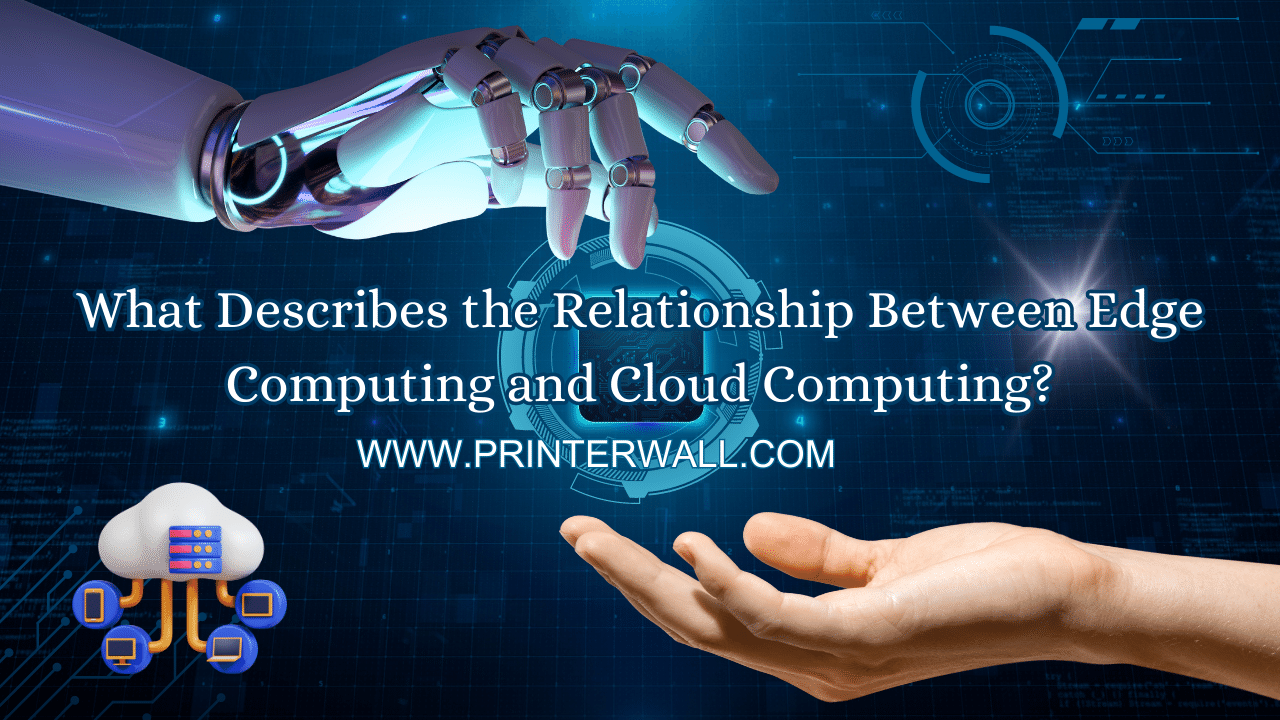Edge computing and cloud computing are the dynamic duo spearheading the transformation of our digital landscape. These computing paradigms, often misconstrued as rival technologies, are actually synergistic forces driving innovation in technology. By integrating these two revolutionary paradigms, we are capable of building a computing environment that is efficient, flexible, and infinitely scalable. In this article, we will discuss about “What Describes the Relationship Between Edge Computing and Cloud Computing” in details. Keep reading!
I. Understanding the Basic Concepts: Edge Computing and Cloud Computing
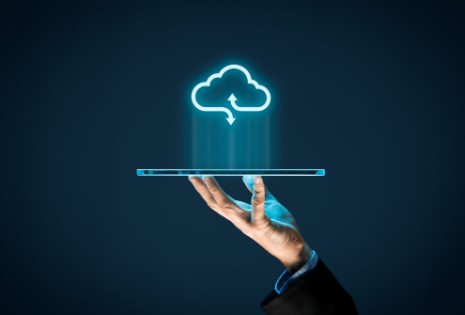
Before delving into the relationship between edge computing and cloud computing, it is essential to understand the core concept of each.
Cloud computing, a concept that took flight in the early 2000s, represents the centralized model of computing where data is stored and processed in large, remote data centers. This paradigm facilitates scalability, cost-efficiency, and ease of management.
Edge computing, on the other hand, is a distributed model of computing where data processing occurs closer to the data source, i.e., on the ‘edge’ of the network. This approach drastically reduces data transmission latency, providing real-time analytics and enhancing user experience.
II. The Harmonious Interplay: How does Edge Computing Complement Cloud Computing?
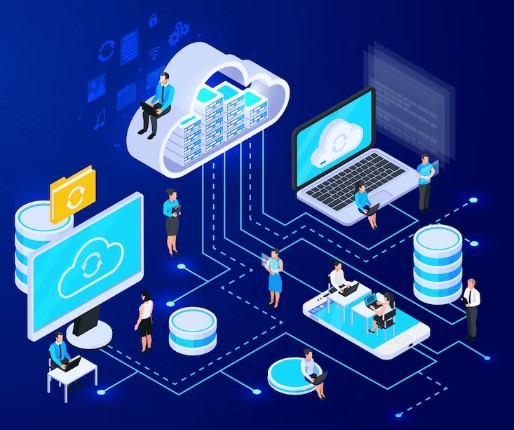
Despite their fundamental differences, edge computing and cloud computing are far from being adversaries. Instead, they function together in a harmonious dance, each complementing the other’s shortcomings.
Edge computing addresses the latency issue that often plagues cloud computing. By processing data at the source, it drastically reduces data transmission time, delivering real-time insights that are pivotal in scenarios such as autonomous vehicles or telemedicine.
Simultaneously, cloud computing compensates for edge computing’s storage limitations. With vast data centers, the cloud provides virtually limitless storage capacity, accommodating the enormous volumes of data generated at the edge. Moreover, it allows for long-term analysis and machine learning model training, providing in-depth insights that are not feasible with edge computing alone.
III. Reinventing the Future: Benefits of Combining Edge Computing with Cloud Computing
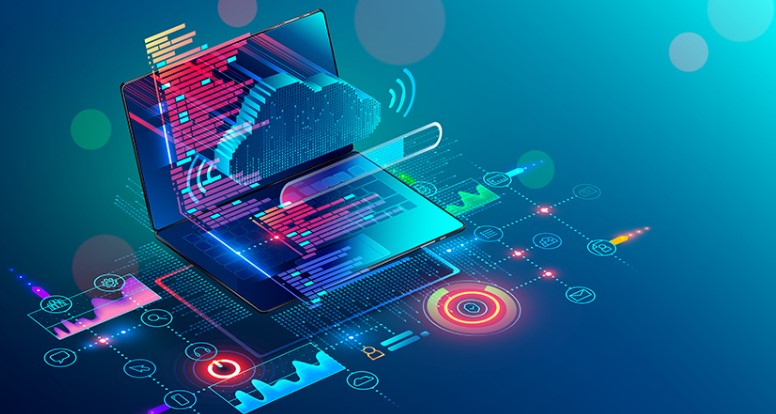
The integration of edge and cloud technologies has ushered in an era of enhanced efficiency, reliability, and speed. The amalgamation of real-time edge analytics with the computational power of the cloud enables businesses to respond promptly to changing conditions while deriving meaningful insights for strategic decisions.
The hybrid cloud-edge model presents a multitude of benefits, including reduced network congestion, cost-effective data management, and bolstered cybersecurity through decentralized data processing.
IV. Real-World Synergy: Edge Computing and Cloud Computing Working Hand in Hand
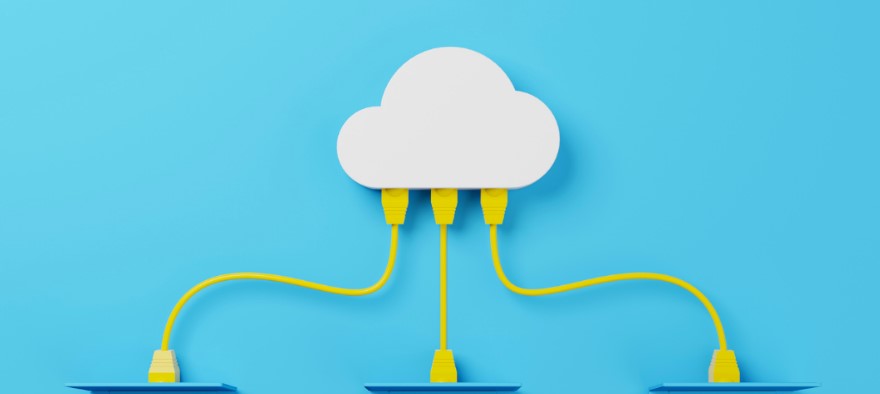
The most compelling evidence of this harmonious interplay is visible in real-world applications where edge and cloud computing work together to revolutionize industries. For instance, in smart cities, edge devices collect data for immediate decision-making while transmitting it to the cloud for long-term analysis and city planning.
V. Looking Forward: The Future of Edge and Cloud Computing
The confluence of edge and cloud computing is reshaping our digital world, pushing the boundaries of what is possible. As technology evolves, we will continue to witness this dynamic duo’s unprecedented potential in creating a smarter, faster, and more connected world.
VI. Harnessing the Power of the Hybrid Cloud Model: The Marriage of Edge and Cloud Computing
The hybrid cloud model serves as an excellent example of the symbiotic relationship between edge and cloud computing. This model synergistically combines the best of both worlds: the real-time, location-dependent processing power of edge computing, and the nearly infinite storage and robust analytics capabilities of the cloud.
By utilizing a hybrid cloud model, organizations can distribute processing between the edge and the cloud, depending on the task at hand. For example, time-sensitive data can be processed at the edge for immediate action, while non-time-sensitive data can be sent to the cloud for thorough analysis, data mining, or long-term storage.
This model also offers a high degree of flexibility. Businesses can dynamically allocate resources based on demand, enhancing cost efficiency. Moreover, the hybrid cloud model contributes to resilience as it ensures that a failure in one part of the system doesn’t paralyze the entire operation.
VII. Network Latency Reduction: A Key Benefit of the Edge-Cloud Duo
A significant advantage of edge computing is its ability to reduce network latency. In the cloud computing model, data needs to travel a long distance from the source to the data center, leading to latency. However, with edge computing, data processing occurs close to the data source, eliminating the need for long-distance data transmission and thereby reducing latency.
This benefit of edge computing is essential in applications where real-time data processing is critical, such as autonomous driving, drone navigation, and virtual reality. In such scenarios, the slightest delay in processing can lead to significant repercussions.
Nevertheless, cloud computing still plays an essential role here. Once the edge devices process the immediate, time-sensitive data, the remaining, less time-sensitive data can be sent to the cloud. The cloud’s powerful processing and analytics capabilities can then provide valuable insights from this data, which can be used to enhance future performance and efficiency.
VIII. Edge-to-Cloud Integration: Enabling a Seamless IoT Ecosystem
The Internet of Things (IoT) has exploded in recent years, with a plethora of devices generating vast amounts of data. Managing this data effectively is crucial for optimizing the benefits of IoT. This is where the edge-to-cloud integration comes into play.
Edge computing enables real-time processing of this data, facilitating immediate action. For instance, an edge device in a smart home can process data to adjust the thermostat or detect an intruder immediately. Meanwhile, this data can also be sent to the cloud for comprehensive analysis and long-term storage.
This integration creates a seamless IoT ecosystem, where devices can operate efficiently, independently yet in sync with each other, while also providing valuable data for further analysis and improvement.
IX. The Cybersecurity Implications of Cloud-Edge Collaboration
Cloud-edge collaboration also has significant implications for cybersecurity. The distributed nature of edge computing adds a layer of security as it decentralizes data processing, thereby reducing the impact of a potential breach.
At the same time, the cloud offers robust security measures, including encryption protocols, threat detection algorithms, and more. By combining edge computing’s decentralization with the advanced security measures of the cloud, the cloud-edge collaboration provides a fortified defense against cyber threats.
X. Future Implications for Cloud Service Providers
As edge computing continues to grow, cloud service providers will need to adapt and innovate. There will be an increasing demand for services that support edge computing, such as edge data centers and edge-to-cloud integration services.
Cloud service providers will also need to invest in technologies that enhance data synchronization between the edge and the cloud, ensuring data consistency and seamless operation. Moreover, as the edge-cloud integration opens up new avenues for cyber threats, cloud service providers will also need to focus on strengthening cybersecurity measures.
Frequently Asked Questions About What Describes the Relationship Between Edge Computing and Cloud Computing
1. Can edge computing replace cloud computing entirely?
No, edge computing cannot replace cloud computing entirely. These two paradigms have distinct roles and complement each other. The edge offers real-time processing, while the cloud provides vast storage and advanced analytics.
2. What role does data synchronization play in the relationship between edge computing and cloud computing?
Data synchronization is crucial as it ensures data consistency between edge devices and the cloud. This process allows for real-time decision-making at the edge while ensuring comprehensive data analysis in the cloud.
3. How does the integration of edge and cloud technologies impact cybersecurity?
The integration enhances cybersecurity. While edge computing decentralizes data, reducing the impact of a potential breach, the cloud offers advanced security protocols and tools for threat detection and management.
Also Read: FilmyWorld: Download 480p, 720p, 1080p Movies Free [2023]
Conclusion
The relationship between edge computing and cloud computing is not just symbiotic; it’s a harmonious fusion that is driving the future of technology. It’s a testament to the power of technology when we leverage different paradigms in tandem rather than isolation. We hope this guide about “What Describes the Relationship Between Edge Computing and Cloud Computing” prove much beneficial for all our readers. This partnership, coupling the immediacy of edge computing with the vast potential of the cloud, promises to redefine the digital realm in ways that were previously unimaginable.

Aretha Davis, the wordsmith extraordinaire, weaves enchanting tales with her pen and keyboard. A renowned blogger and writer, her captivating prose transports readers to realms unknown. Join her literary journey and be swept away by the magic of her words.
